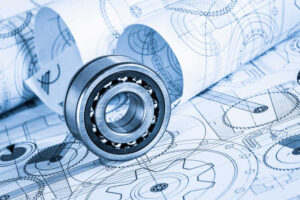The Key Elements of Bearing Design: A Comprehensive Guide

Bearing design plays a crucial role in ensuring optimal performance and longevity of various mechanical systems. From automotive engines to industrial machinery, the proper design of bearings significantly impacts their load capacity, friction reduction, and overall efficiency. In this article, we will delve into the essential elements of bearing design, highlighting the factors that engineers consider when creating reliable and high-performing bearings.
1. Understanding Bearing Design:
It involves careful consideration of several key factors, including load type, operating conditions, speed requirements, and dimensional constraints. A well-designed bearing must balance these elements to offer optimal performance and longevity in a specific application.
2. Design Bearing Load Capacity:
The load capacity of a bearing is the maximum load it can withstand without permanent deformation or failure. Design engineers assess both radial and axial loads that act on the bearing to determine appropriate dimensions, materials, and configurations. By accurately calculating load distribution and considering factors such as static and dynamic loads, they ensure the bearing can handle the anticipated stresses.
3. Friction Reduction:
Reducing friction is paramount in bearing design to minimize energy loss and extend the overall lifespan of the system. Engineers focus on creating low-friction interfaces between rolling elements, raceways, and lubricants. They utilize advanced lubrication techniques, surface treatments, and precision manufacturing processes to optimize the bearing’s performance in terms of rotational smoothness and efficiency.
4. Material Selection:
Choosing the right materials for bearing components is critical to ensure durability and reliability. Commonly used materials include steel, ceramic, and various metal alloys. Engineers consider factors such as corrosion resistance, fatigue strength, hardness, and temperature resistance when selecting materials to withstand the operating conditions of the application.
5. Bearing Geometry:
The geometric design of a bearing influences its load-carrying capacity, stability, and performance. Engineers carefully determine the optimal dimensions and shape of the bearing’s rolling elements, inner and outer raceways, and cage. This ensures proper load distribution, reduced stress concentrations, and improved overall functioning of the bearing.
6. Lubrication and Sealing:
Effective lubrication is vital for reducing friction, preventing wear, and dissipating heat within the bearing. Bearing designers choose appropriate lubricants and sealing mechanisms based on factors such as operating speed, temperature, and environment. Lubrication systems, such as oil baths or grease-packed enclosures, are designed to ensure a consistent supply of lubricant to the bearing surfaces.
7. Testing and Validation:
Before a bearing design is finalized, extensive testing and validation are conducted to verify its performance under real-world conditions. Engineers use various techniques, including endurance testing, load testing, and accelerated life testing, to assess the bearing’s reliability, fatigue resistance, and durability. These tests ensure that the design meets industry standards and customer expectations.
Conclusion:
Bearing design is a complex process that requires a deep understanding of engineering principles, materials, and performance requirements. By carefully considering factors such as load capacity, friction reduction, material selection, and lubrication, engineers can create bearings that offer optimal performance, longevity, and efficiency. Well-designed bearings not only enhance the overall performance of mechanical systems but also contribute to reducing maintenance costs and improving productivity. By prioritizing effective bearing design, manufacturers can ensure the success of their products in various industries, ranging from automotive and aerospace to heavy machinery and medical devices.






